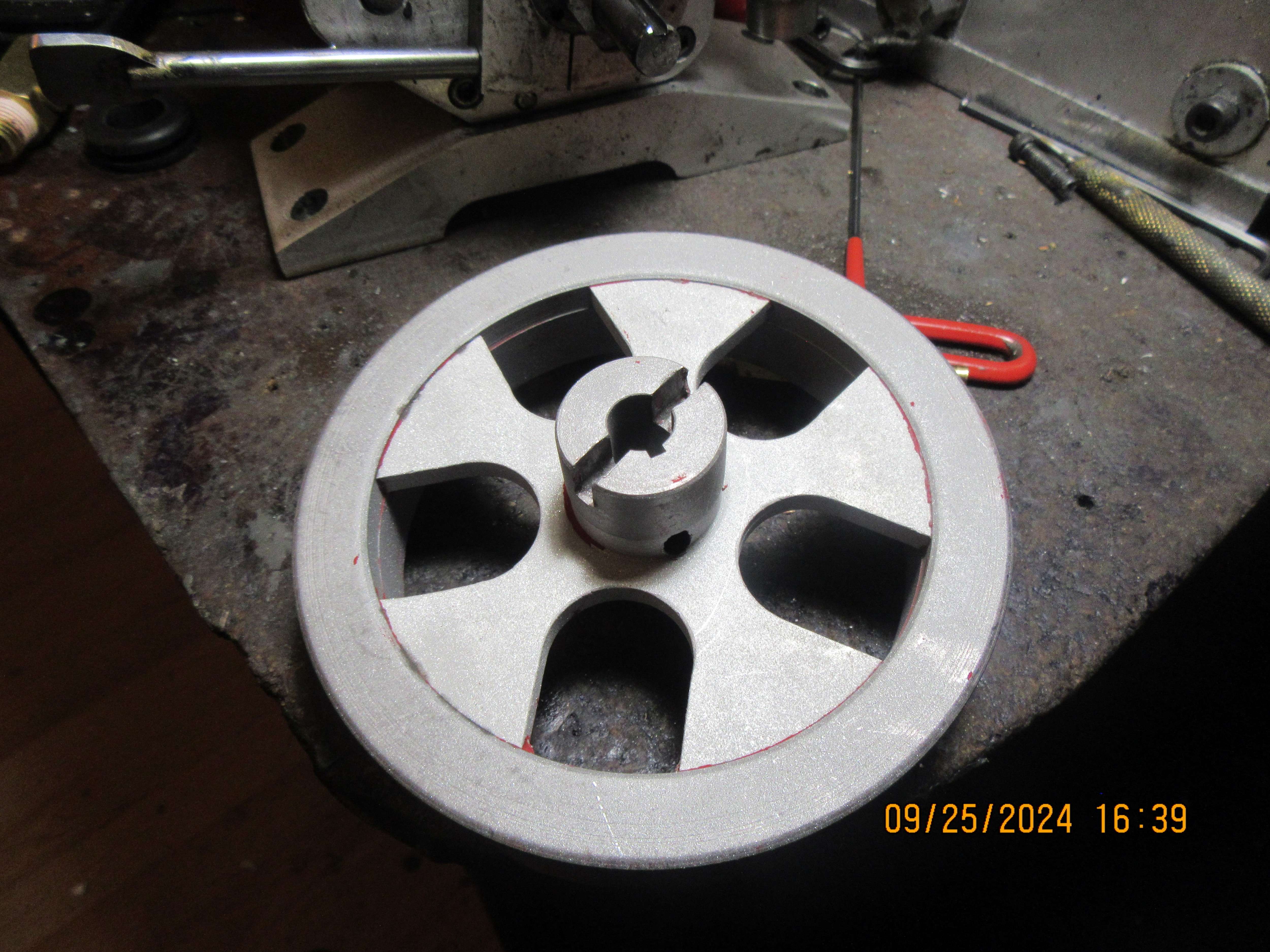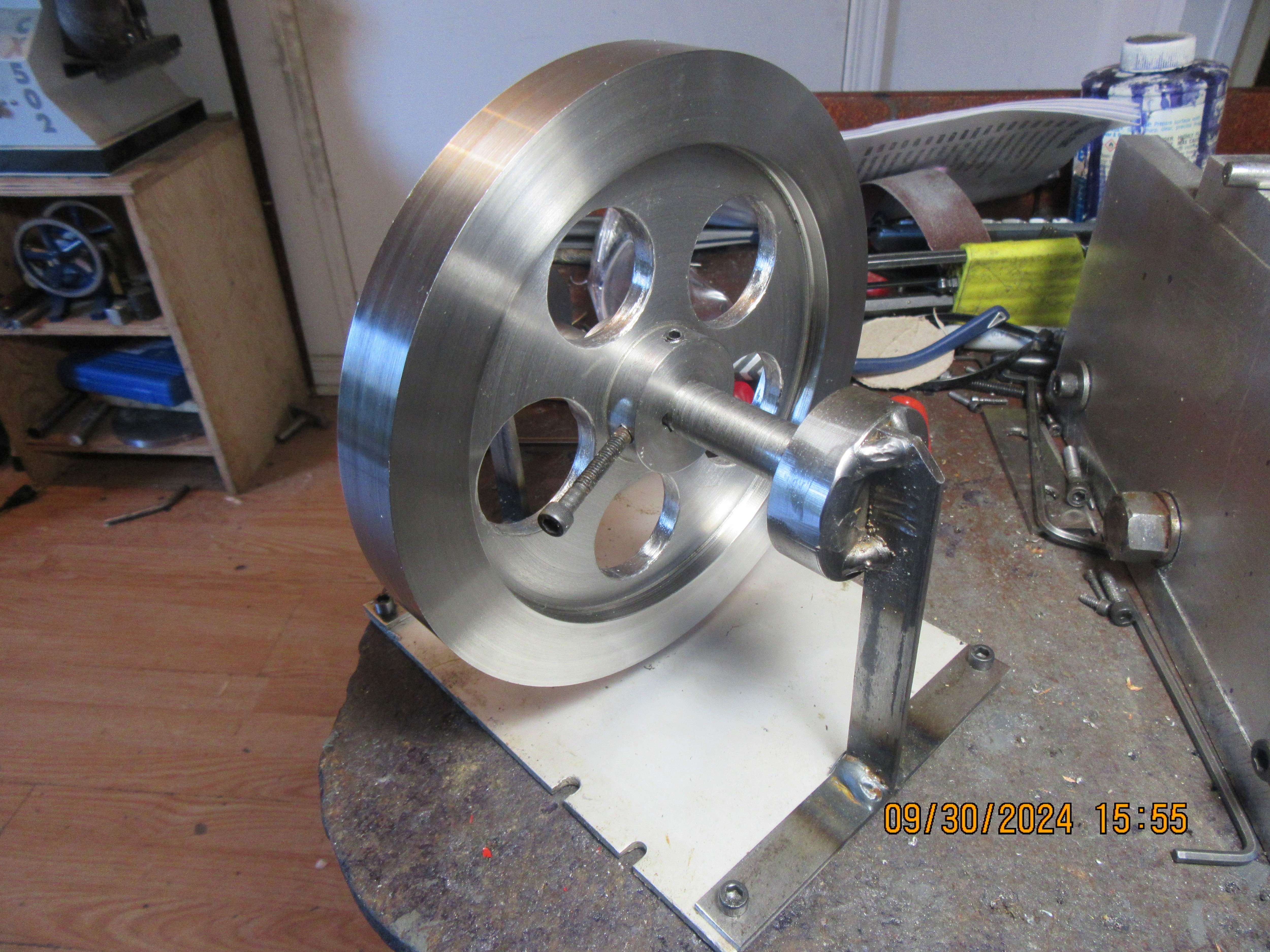A few years ago I designed and built this i.c. engine, and at the time I painted the gas tank and the flywheel with red spray on enamel. As time went by, the enamel paint on the flywheel got chipped, scratched, and generally buggered up. To redo this flywheel with powder paint, the enamel paint will have to be totally removed (sandblaster). Then the powder paint (which is applied as a dry powder) will be sprayed onto the flywheel and baked in an oven until the powder melts and flows out smoothly. This results in an almost bullet-proof coating, which is very resistant to scratches and chipping away. In order to hold this part securely in place while applying the powder paint and baking it will require some simple fixturing which I will show as I go along. This will be the first thing I have ever powder painted, so stay with me and we'll see what the results will be.---Brian







































![MeshMagic 3D Free 3D Modeling Software [Download]](https://m.media-amazon.com/images/I/B1U+p8ewjGS._SL500_.png)




































